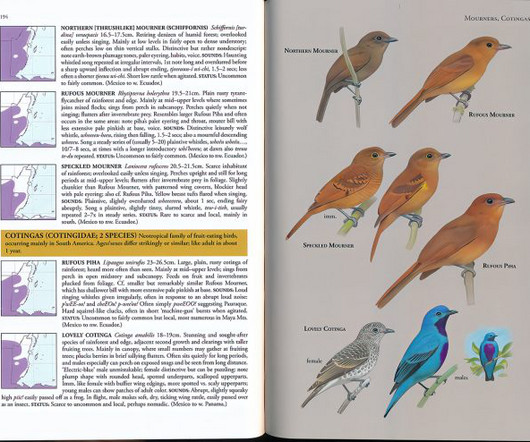Birds of Belize & Birds of Costa Rica: A Field Guide Review Doubleheader
10,000 Birds
SEPTEMBER 8, 2023
An associated issue is that the Belize and Costa Rica guides share many of the same descriptions of species, written by Howell. Similarly, descriptions of species repeated across volumes do not lose their accuracy with each publication. Other species are splits and lumped and have had their names changed. Why are these issues?













Let's personalize your content